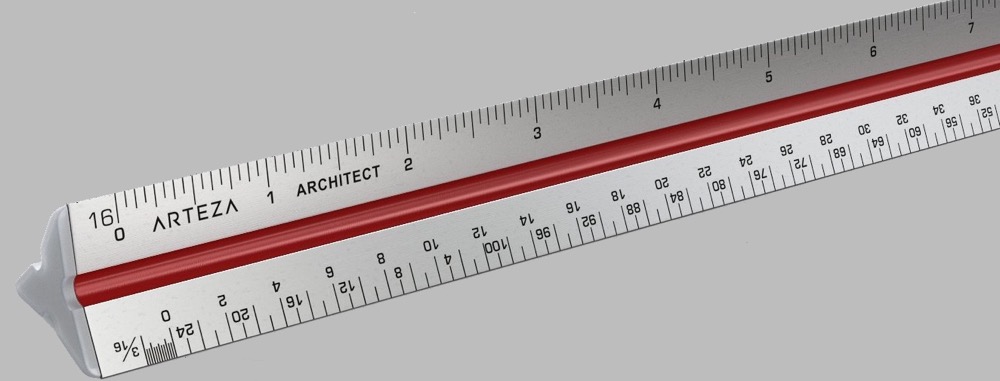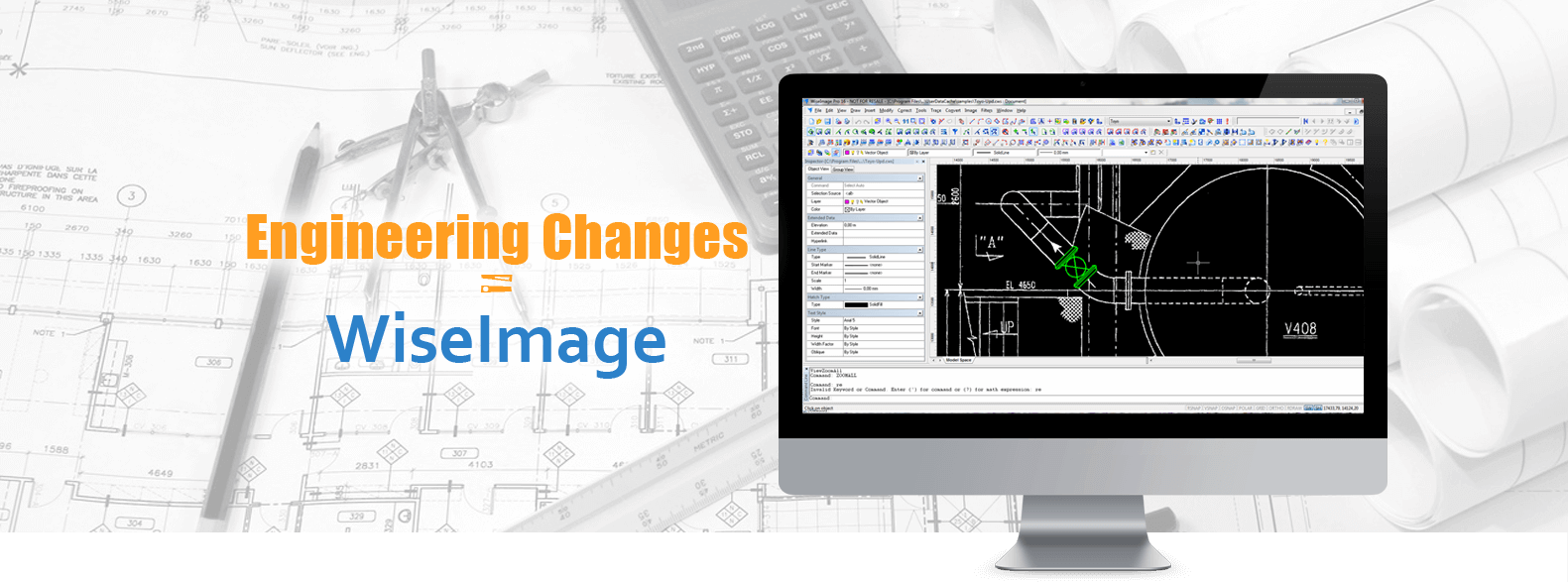He has been building his three year old small sub-contracting business by biding competitively, providing quality workmanship, no hassle service, and delivering on time. So, when he submits a bid for a substantial project, and wins, he is elated! He takes his wife out for a nice dinner to celebrate! This was going to be the project that puts his company on the map! This small sub-contractor had just won a competitive bid for a sizable project! But yet it nearly put him out of business! Even though based upon the plans that he had, he accurately provided a very fair estimate with a modest profit.
What he didn’t realize was that the plans that the other print shop copied, were not to scale! So, his bid was too low! He had underestimated the quantity of material needed for the project!
In the world of construction, precision is paramount. When it comes to working with construction drawings, maintaining the correct scale is crucial. However, there are instances where the drawings scale changes just from being copied. And when a drawing is intentionally enlarged or reduced this assuredly will change the scale. Herein, we’ll explore the implications of these changes on scale and how they can affect construction projects. How you can check the scale. How you can bring out-of-scale drawings back to scale. And how the sub-contractor fared with this business crippling adversity.
What is a Drawing’s Scale
 A drawing’s scale refers to the ratio between the measurements on the drawing and the corresponding measurements in reality. It is a fundamental aspect of construction documentation, allowing professionals to accurately communicate the size, proportions, and spatial relationships of elements within a building or structure.
A drawing’s scale refers to the ratio between the measurements on the drawing and the corresponding measurements in reality. It is a fundamental aspect of construction documentation, allowing professionals to accurately communicate the size, proportions, and spatial relationships of elements within a building or structure.
For example, a scale of 1/4″ = 1′ means that one-quarter inch on the drawing represents one foot in the real world. This enables architects, engineers, and builders to precisely interpret and execute the design.
Maintaining the correct scale is critical to ensure that the constructed result matches the original design intent. Any deviations from the intended scale can lead to a host of problems, including structural instability, non-compliance with building codes, and costly rework.
Most construction drawings will stipulate the scale via a legend and diagram.
Anyone submitting a bid for the work has to have drawings that are to scale. If not, the cost of a take-off scaling blunder could be rather substantial!
In the following sections, we’ll explore the various scenarios in which a drawing’s scale may be inadvertently altered, such as through the copying process, and deliberate actions like enlargement or reduction. We’ll also provide practical tips on how to verify and correct the scale of drawings, ensuring that precision remains at the forefront of every construction project.
How a Copy Can Alter the Scale
Making copies of construction drawings is a common practice for distributing plans to various trades involved in a project. However, it’s crucial to be aware that the copying process itself can introduce changes to the scale. This occurs due to a combination of factors, including the precision of the copying equipment, variations in paper sizes, and slight distortions that may occur during the reproduction process. Additionally inexperienced operators of equipment can overlook “stretching”, which sometimes occurs.
For instance, when a drawing is reproduced using a photocopier or scanner, there can be a small amount of distortion or scaling error introduced. This means that the dimensions on the copy may not be precisely proportional to the original drawing. In the case of a scale like 1/4″ = 1′, even a minor discrepancy in the reproduction process can lead to significant discrepancies in the final measurements.
To mitigate this risk, it’s advisable to verify the scale of copied drawings before they are used for construction. This can be done by measuring a known dimension on the copy and comparing it to the corresponding dimension on the original drawing. If any discrepancies are identified, adjustments should be made to ensure that the scale is accurate before proceeding with the project. This simple yet crucial step can save a project from potential inaccuracies and costly rework down the line.
Altered Dimensions and Proportions
Deliberate or unintentional enlargement or reductions to a construction drawing inherently leads to changes in dimensions and proportions. This can have significant consequences on the overall design. For instance, a structural element that was originally intended to bear a certain load may no longer meet specifications after a significant enlargement. Conversely, a reduced drawing may result in details that are too small to be safely constructed.
Potential for Inaccuracy
Each time a drawing is copied, yet alone scaled up or down, there is a risk of introducing inaccuracies. Even with the best tools and techniques, there is always a margin of error associated with this process. Therefore, it is crucial to carefully verify and double-check dimensions after any copies are made to ensure that they align with the original design intent.
Compliance with Codes and Standards
 Changes in scale can potentially lead to non-compliance with building codes and industry standards. Elements like door widths, stair dimensions, and accessibility features must adhere to specific regulations. Inadvertent enlarging or reducing a drawing without meticulous attention to these details could result in costly rework or legal complications. Impact on Material Quantities and Costs such as enlarging a drawing may result in increased material quantities, while reducing a drawing could lead to reduced material requirements. This can have a direct impact on project budgets and timelines. It is crucial to carefully reevaluate cost estimations and procurement plans after any changes in scale to ensure they remain accurate.
Changes in scale can potentially lead to non-compliance with building codes and industry standards. Elements like door widths, stair dimensions, and accessibility features must adhere to specific regulations. Inadvertent enlarging or reducing a drawing without meticulous attention to these details could result in costly rework or legal complications. Impact on Material Quantities and Costs such as enlarging a drawing may result in increased material quantities, while reducing a drawing could lead to reduced material requirements. This can have a direct impact on project budgets and timelines. It is crucial to carefully reevaluate cost estimations and procurement plans after any changes in scale to ensure they remain accurate.
Coordination Challenges
 If multiple disciplines are involved in a construction project, changes in scale can lead to coordination challenges. Elements that were originally designed to align seamlessly may no longer fit together as intended. This can lead to conflicts on-site and may require additional effort to resolve.
If multiple disciplines are involved in a construction project, changes in scale can lead to coordination challenges. Elements that were originally designed to align seamlessly may no longer fit together as intended. This can lead to conflicts on-site and may require additional effort to resolve.
Quality Control and Verification
When a drawing is resized, it is imperative to conduct thorough quality control checks. This involves meticulously reviewing all dimensions and details to ensure they align with the revised scale. Any discrepancies or inconsistencies must be addressed promptly to maintain the integrity of the project.
How to Check a Plans Scale
Verifying the scale of a construction drawing is a vital step in ensuring the accuracy and integrity of a project. Here are some effective methods for checking a plan’s scale:
 Use a Scale Ruler: A scale ruler is a specialized tool designed for measuring drawings at different scales. It has multiple calibrated edges, each corresponding to a specific scale ratio. By aligning the ruler with the dimensions on the drawing, you can quickly determine if the scale is accurate.
Use a Scale Ruler: A scale ruler is a specialized tool designed for measuring drawings at different scales. It has multiple calibrated edges, each corresponding to a specific scale ratio. By aligning the ruler with the dimensions on the drawing, you can quickly determine if the scale is accurate.- Measure a Known Dimension: Identify a dimension on the drawing that you are certain about. For example, if there is a known distance between two walls, measure it on the drawing. Then, convert the measurement to real-world units using the stated scale. If the calculated measurement matches the actual distance, the scale is correct.
- Compare with Reference Dimensions: If the drawing includes reference dimensions (e.g., the length of a wall or the width of a doorway), verify that they align with the stated scale. Any discrepancies should be investigated and resolved.
- Overlay with a Known Template: If possible, overlay the drawing with a known template or physical object of a known size. This can be a printed scale ruler, a standard sheet of paper, or a physical object like a door or window frame. Ensure that the dimensions on the drawing align accurately with the template.
- Perform Cross-Checks: Compare various dimensions on the drawing to ensure internal consistency. For example, if the width of a room is stated, ensure that it is consistent with the dimensions of the walls that define it.
Remember, accuracy is so important in construction, and rectifying any scale discrepancies early in the process can prevent costly errors and delays later on. By implementing these methods, you can be confident that the drawing’s scale is correct and that the project will proceed according to plan.
How To Bring Out-of-Scale Plans Back to Scale
Discovering that a construction drawing is out of scale can be a cause for concern, but there are several steps you can take to rectify the situation and ensure accuracy in your project. Here are some effective methods for bringing out-of-scale plans back to their intended scale:
- Refer to the Original Source: If possible, obtain the original digital file or master copy of the drawing from the designer or architect. This source is less likely to have undergone any unintended alterations in scale.
- Reprint or Reproduce the Drawing: If the drawing was inadvertently altered during reproduction, consider re-printing or reproducing it using a high-quality, calibrated printer or copier. Be sure to select settings that maintain the original scale.
- Use a Scale Factor: Calculate the scale factor that was applied to the drawing and apply the inverse to restore it to its correct scale. For example, if the drawing was enlarged by 10%, use a scale factor of 0.9 to reverse the enlargement.
- Employ CAD Software: Scan the drawing to create a digital file format, convert it to CAD and utilize CAD software to rescale it accurately. This can be done by selecting specific reference points and adjusting the scale accordingly.

- Grid Method: Overlay a grid of known dimensions onto the drawing. Adjust the grid’s size until it aligns with the drawing’s features accurately. This method can help you determine the correct scale.
- Perform a Verification Check: Re-measure known dimensions on the drawing and compare them to the original dimensions. If discrepancies persist, make necessary adjustments until the measurements align correctly.
- Consult with Professionals: Seek guidance from architects, draftspersons, or experienced professionals who are well-versed in handling construction drawings. They may offer insights or specialized techniques for restoring scale.
- Consider a Professional Reproduction Service: If precision is critical, consider using a professional reproduction service equipped with high-quality equipment and expertise in handling construction drawings, like us:

Remember, restoring a drawing to its correct scale requires meticulous attention to detail and precision. Regular verification checks and collaboration with knowledgeable professionals can help ensure that your project proceeds accurately and according to plan. By following these steps, you can effectively address and rectify any scale discrepancies in your construction drawings.
In Summary
While there may be valid reasons for enlarging or reducing construction drawings, it is key to check the accuracy of the scale. Changes in scale can have far-reaching implications on a construction project, From altering dimensions and proportions to potentially impacting compliance with codes and standards. By recognizing the potential challenges and implementing rigorous quality control measures, professionals in the construction industry can navigate changes in scale effectively and ensure the success of their projects.
The Rest of the Sub-Contractor’s Story
The morning after being awarded, the sub-contractor ordered the initial material and lined-up the labor. On a much later site-visit to check on the progress he realized that he was going to run short on material. Upon further investigating, he realized that he had also underestimated the labor time.
The sub-contractor realized what had happened and that it had actually been his mistake. The original plans were to be plotted on 36″x48″ sheets, and without realizing it, he had requested a common size of 24″x36″ to use for his take-off and estimate. The print shop had not questioned the request and he inadvertently looked past the legend’s scale when doing his take-off.
He was going to be more than midway through the project and had to make a decision. Taking on this project could afford him the opportunity to do work for the largest most reputable General Contractor (GC) in town; it was well known that if he provided good workmanship and delivered timely with no issues that this GC would invariably provide him with a lot more work in the future. He had signed a contract and realized that failing to perform would certainly have ruined his business. Luckily he had passion for his business, a no quit attitude, and a home equity line of credit that he was able to utilize to purchase the additional material. He also rolled-up his sleeves and worked long hours ahead of, along side of, and after his crew. He also significantly reduced his expenses and had completely dwindled his available funds.
Fast-forward to today, the sub-contractor still does work for that GC, he has a very successful small business, and ever since has had us do all of his printing “to scale”! We even spot check his prints to be assured that the scale is correct!



 Use a Scale Ruler: A scale ruler is a specialized tool designed for measuring drawings at different scales. It has multiple calibrated edges, each corresponding to a specific scale ratio. By aligning the ruler with the dimensions on the drawing, you can quickly determine if the scale is accurate.
Use a Scale Ruler: A scale ruler is a specialized tool designed for measuring drawings at different scales. It has multiple calibrated edges, each corresponding to a specific scale ratio. By aligning the ruler with the dimensions on the drawing, you can quickly determine if the scale is accurate.
